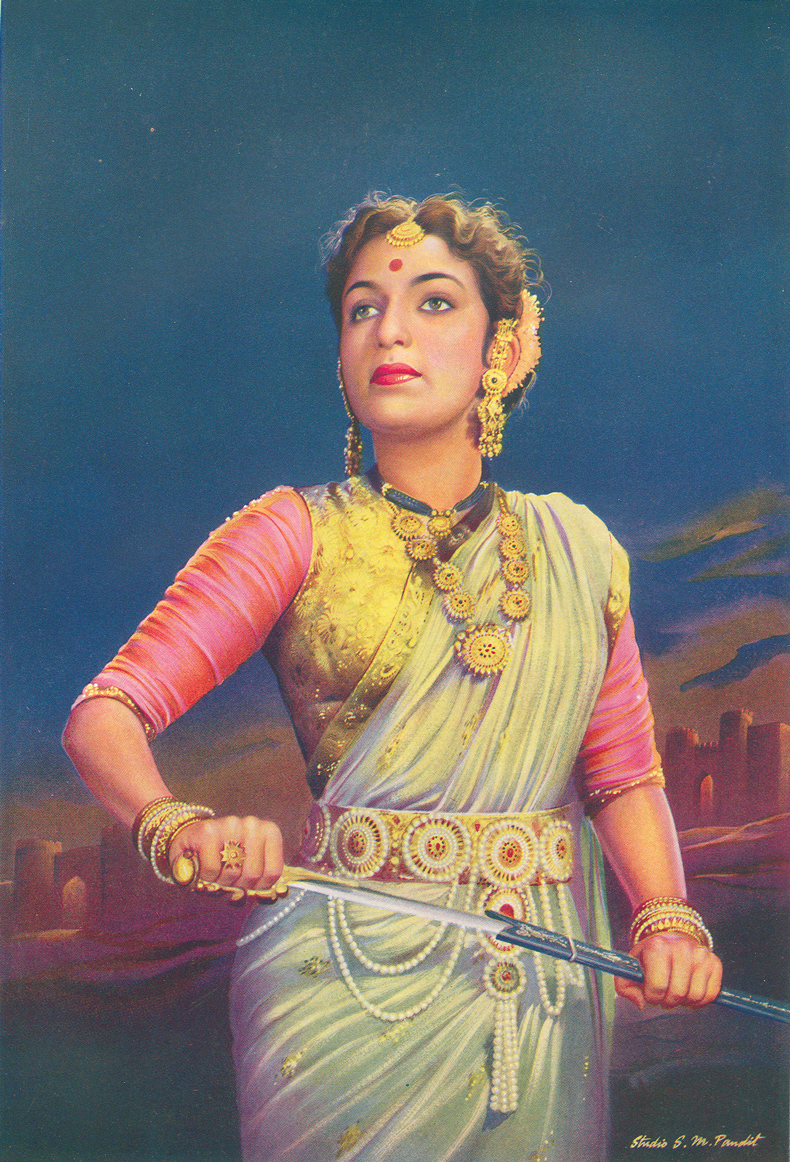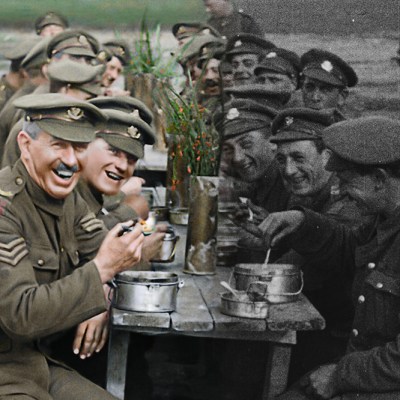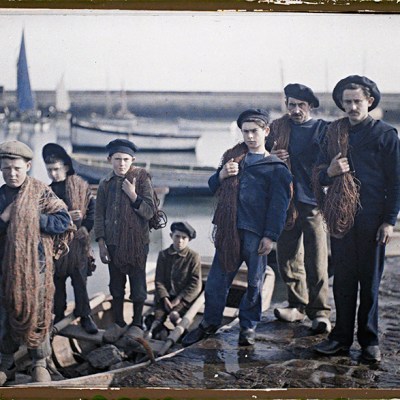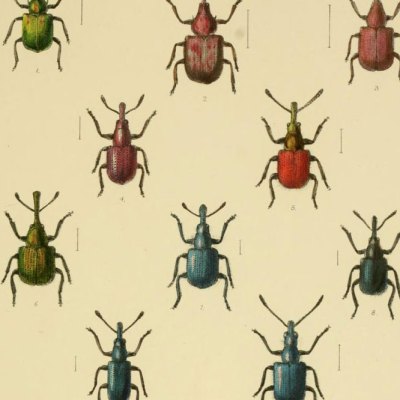From the October 2023 issue of Apollo. Preview and subscribe here.
Among the many idiot savants who populate Thomas Pynchon’s postmodern novel Gravity’s Rainbow (1973), one of the most memorably oblivious is surely the nameless US Army colonel who, sitting in a military barber’s chair deep in Germany in the summer of 1945, manages to intuit the destruction of Hiroshima by observing the unusually radiant hues of the Thuringian sunset. Imagining that such atmospheric phenomena must have their source in some natural disaster (‘Another Krakatoa?’) the colonel remains blissfully unaware that American nuclear technology, rather than volcanic activity, is the likely cause. ‘Do you suppose’ – he asks his hairdresser – ‘something has exploded somewhere? […] Yes, Private, the colors change, and how!’
 The Rainbow’s Gravity: Colour, Materiality and British Modernity owes Pynchon’s door-stopper no more than its playful title, yet Kirsty Sinclair Dootson shares with the observant colonel a profound awareness of colour not simply as a range of sensory perceptions translating a spectrum of electromagnetic wavelengths, but also as an array of chromatic effects produced by specific configurations of physical substances and technologies. As Dootson shows, the history of colour in modern British visual culture is simultaneously a history of technical innovation in which engineers, chemists and artists together developed materials, devices and techniques that enabled new visual effects, and a social history in which Britain’s imperial exploits furnished the means for these effects (through the exploitation of colonial resources and labour) and challenged artists and audiences to recalibrate the conventional values they attached to colours. In Dootson’s argument, each new technology of colour, from mass-produced oil paint to colour television, has taken as a crucial test case the capacity of the medium to produce accurate representations of human skin tones – understood, in almost every instance, as white skin tones.
The Rainbow’s Gravity: Colour, Materiality and British Modernity owes Pynchon’s door-stopper no more than its playful title, yet Kirsty Sinclair Dootson shares with the observant colonel a profound awareness of colour not simply as a range of sensory perceptions translating a spectrum of electromagnetic wavelengths, but also as an array of chromatic effects produced by specific configurations of physical substances and technologies. As Dootson shows, the history of colour in modern British visual culture is simultaneously a history of technical innovation in which engineers, chemists and artists together developed materials, devices and techniques that enabled new visual effects, and a social history in which Britain’s imperial exploits furnished the means for these effects (through the exploitation of colonial resources and labour) and challenged artists and audiences to recalibrate the conventional values they attached to colours. In Dootson’s argument, each new technology of colour, from mass-produced oil paint to colour television, has taken as a crucial test case the capacity of the medium to produce accurate representations of human skin tones – understood, in almost every instance, as white skin tones.
The colour of skin, Dootson notes, ‘was consistently used as the benchmark for the chromatic fidelity of any colour process’, from the artificial pigments that British chemists began to synthesise from coal tar in the late 1850s, to the electromagnetic marvels of colour television a century later. In each case, she shows how, in seeking to demonstrate the colour-reproducing capacities of new media, artists and technicians invariably calibrated their chromatic spectrums according to the difference between an idealised white complexion (the ‘English Rose’) and the darker pigmentation of those colonial subjects, mainly of Asian and African heritage, whose skin ‘was already imagined as a locus of colour’.
Dootson charts the resistance mounted to synthetic pigments by Pre-Raphaelite artists such as William Holman Hunt, who swore revenge on his supplier when he found the delicately depicted flesh of his Christ in The Shadow of Death (1870–73) turning ‘the colour of old leather’. From there, she considers the development of the commercial colour printing technique of chromolithography and its overlapping uses in late-Victorian advertising – especially the racist publicity materials circulated by soap manufacturers such as Pears – and in dermatological textbooks. A chapter on interwar photography focuses on the remarkable portraits and self-portraits of the society photographer Yevonde Cumbers (‘Madame Yevonde’). Dootson describes how the development of colour photography, initially associated with commerce, gave rise to debates about the ‘feminisation’ of the medium, in which colour was dismissed as superficial and secondary to more ‘masculine’ considerations such as composition and depth of field.
Mehtab depicted as the lead in a souvenir programme for Jhansi Ki Rani (1953), India’s first Technicolor film, produced and directed by Sohrab Modi. William K. Everson Collection, New York University. Film: © Minerva Movietone/Mehelli Modi

Moving from Madame Yevonde’s still frames to post-war motion pictures, Dootson traces the imperial associations of colour cinema, explaining how British film producers and technicians, having established a monopoly on the new American-made technology of Technicolor outside the United States, deployed it in the service of a new ‘chromatic imperialism’ which, for a time, buttressed racial hierarchies in a period of Britain’s imperial decline. Finally, the launch of colour television in Britain in the late 1960s serves as the foundation of a virtuoso chapter encompassing Kenneth Clark’s Civilisation (1969), BBC test cards, the UK’s first colour broadcast of an opera (Verdi’s Aida, in February 1968), and the now notorious Black and White Minstrel Show (1958–78).
The concerns of Dootson’s post-war narrative begin to overlap with those of The Tiger in the Smoke (2018), Lynda Nead’s study of the colour and atmosphere of post-war Britain. But where Nead emphasises the emergence of a brighter and apparently more diverse Britain out of the smog of Blitz-time black-and-white, Dootson takes a longer and in some ways more doubtful view of the nation’s ‘kaleidoscopic history’. Her volume is more grounded in the material particulars of techniques and resources than Nead’s. It is also a more specialised volume than recent colour-focused works such as James Fox’s The World According to Colour (2021) and The History of Colour (2023) by Neil Parkinson; its value lies less in the broad sweep of a grand narrative than in its luminously detailed descriptions of specific technologies and techniques and the effects they enabled – or, on occasion, precluded – in a carefully demarcated set of times and places.
The Rainbow’s Gravity concludes with a topical coda focusing on Chila Kumari Singh Burman’s lockdown installation Remembering a Brave New World, which in the winter of 2020 covered the facade of Tate Britain with neon illuminations invoking a pantheon of Hindu deities for Diwali, and combined a celebration of the artist’s British-Asian heritage with a critical reflection on the legacies of British colonialism. Dootson shows how Burman’s installation ‘uses colour as a way of interrogating notions of British identity’ from a British-Asian perspective and, quite reasonably, reads its title as a reference to Aldous Huxley’s Brave New World (1932) at a moment when ‘the plots of science fiction have become everyday fact’. But one might also follow the phrase back to its source in Shakespeare’s The Tempest. Here the enslaved figure of Caliban – Prospero’s ‘freckled whelp’ and ‘thing of darkness’ – evokes an even longer history of entanglement in the British imagination among colour, race and empire, and lends further support, if it were needed, to the conclusions of Dootson’s magnificent study.
The Rainbow’s Gravity: Colour, Materiality and British Modernity by Kirsty Sinclair Dootson is published by the Paul Mellon Centre.
From the October 2023 issue of Apollo. Preview and subscribe here.



